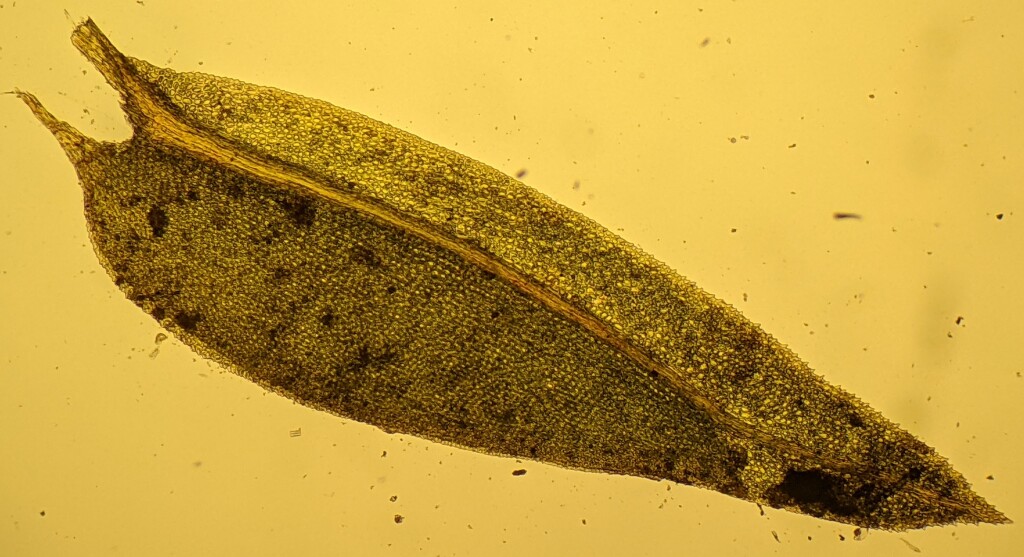Fissidens adianthoides
Hedw.Asexual propagules absent. Tufts on soil or rocks, yellow-green to dark green. Stems 2–5 cm long, occasionally branched, brown, central strand narrow, with abundant rhizoids in leaf axils. Leaves broadly lingulate to lingulate-lanceolate, somewhat falcate, with apices crisped and rolled up when dry, 2.5–4 mm long, 0.8–1.3 mm wide, flat; costa subpercurrent to percurrent, mostly ending 2–4 cells below apex; apex acute to obtuse and apiculate; margin crenulated near base, irregularly dentate toward apex, plane; dorsal laminae with serrulate margins, the 3 or 4 marginal rows more pellucid and thicker-walled, forming a paler border; cells ±isodiametric, rounded-heaxagonal or oblong, 12–35 μm long, 12–18 (–25) μm wide, uniform throughout length. Vaginant laminae up to 1/2–2/3 leaf length, half open, the 3 or 4 marginal rows more pellucid and thicker-walled, forming a paler border. Autoicous or possibly dioicous. Seta 15–20 mm long, orange-brown. Capsule ovoid to oblong, horizontal to vertical, curved; theca 1–1.6 mm long. Calyptra smooth, cucullate. Operculum curved rostrate, to 1.5 mm long. Peristome teeth bifid.
VVP. Known from a single 1962 record from Cobboboonee State Forest near Portland. Also QLD, NSW and Tas. Widespread throughout northern and southern temperate regions.
 Spinning
Spinning

